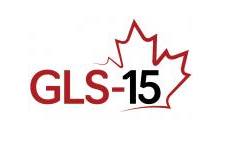CPFD Software has been invited to speak at GLS-15, taking place August 7-10 in Ottawa, Canada. The 15th International Conference on Gas–Liquid and Gas–Liquid–Solid Reactor Engineering (GLS-15) follows the success of the 14 previous GLS conferences, which focus on all aspects of fundamental and applied research in multiphase reactors and processes. The theme of GLS-15 will be: Transfer to Practice – evolution across technology readiness levels.
Peter Blaser will speak on “Application of MP-PIC method to Ebullated Bed Reactors”.
Presentation Summary: “Application of MP-PIC method to Ebullated Bed Reactors”
Ebullated bed reactors are industrially-significant yet difficult to operate units for hydrocracking within refineries. Within an
ebullated bed reactor, a solid particle catalyst is fluidized by a liquid phase containing a discrete bubble phase. The behavior of
these three-phase systems is the result of the interaction between the multiphase hydrodynamics, mass transfer, heat transfer,
and chemical reaction mechanisms and there is therefore a strong interest in the development of CFD models to simulate these
systems at industrial-scale for the purpose of understanding and optimizing the unit performance.In this work, the MP-PIC method is used to simulate gas bubble and particle dynamics within an ebullated bed reactor. The
MP-PIC model, which has been used successfully for the modeling of industrial-scale gas-solid and liquid-solid fluidized beds
on engineering timeframes, has been modified to consider discrete gas bubbles within a liquid phase. The discrete bubbles,
which change volume as a function of pressure and temperature, are coupled with the standard MP-PIC calculations for solid
particles as wells as models for multi-component evaporation, gas absorption, and reaction chemistry to model a full-scale
ebullated bed hydrocracker. Simulations are compared with the available experimental data.
About Peter Blaser
Peter is VP Operations at CPFD with 20+ years’ experience developing and applying specialized computational fluid dynamics (CFD) technologies. Peter is passionate about removing the guesswork surrounding the design and operations of fluid-particle processes through intelligent use of digitalization technology. Peter holds a Master’s of Applied Science degree from the University of Toronto.

